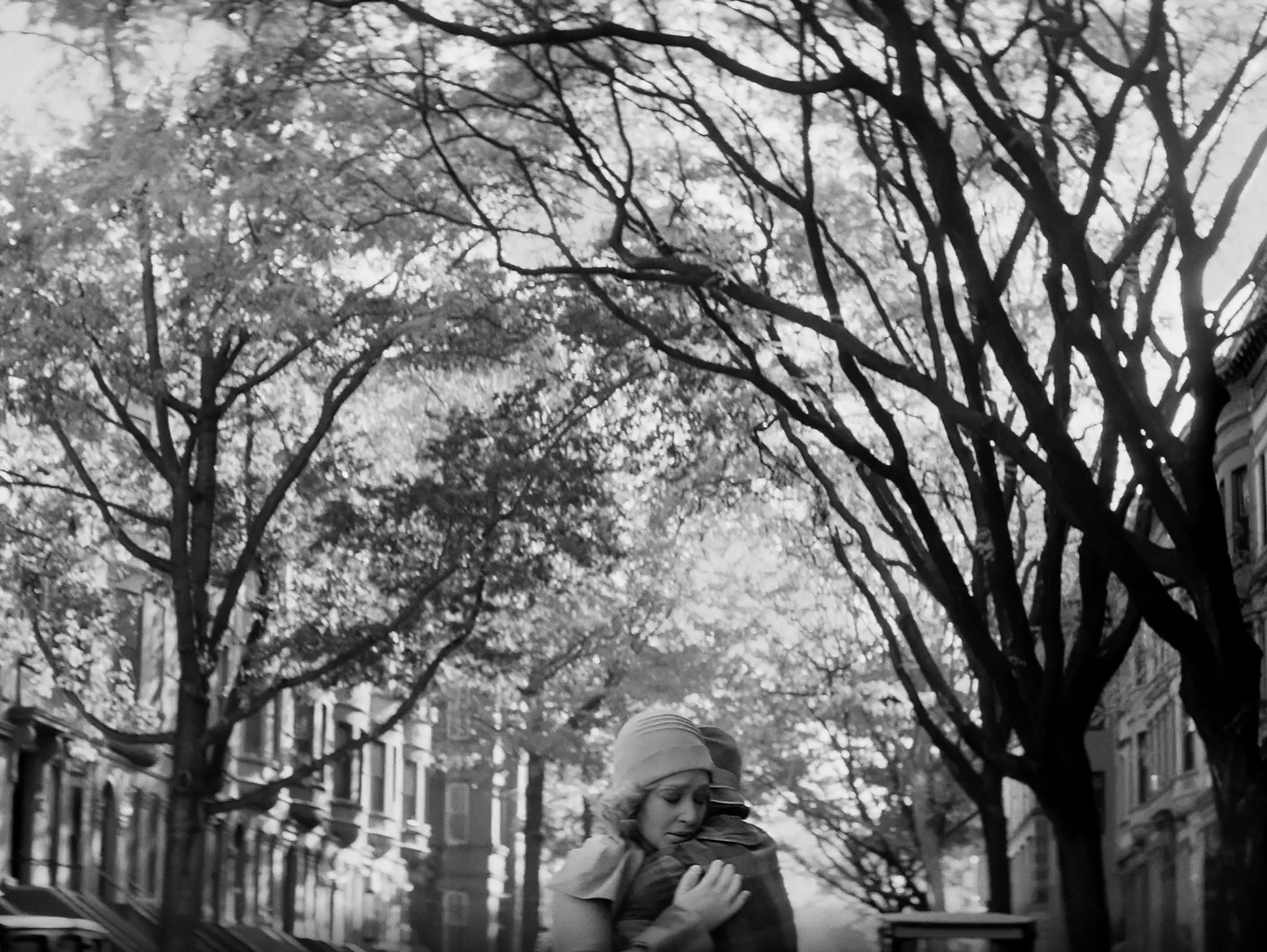Jeremy O. Harris sits down with the creatives behind the noir drama.
When award-winning actress Rebecca Hall first read Passing, author Nella Larsen’s 1920’s landmark novella about two childhood friends who reconnect while living on opposite sides of the color line, she immediately locked onto the narrative as a lens through which to view her own family history. Hall had grown up in England, the daughter of acclaimed opera singer Maria Ewing, whose family hailed from Detroit—when Ewing spoke of her late father, she’d suggest that he might have been Native American or possibly Black. “I’m embarrassed to say, I didn’t even know there was a word for what my grandfather must’ve done to result in me going through the world as a white person now, looking that way anyway,” Hall told Queue earlier this year.
Hall’s adaptation of Larsen’s Passing marks her highly decorated debut as a writer-director. Told through a 4:3 aspect ratio — to reflect the cinematic P.O.V. of the era — and in deceptively modest black and white, Hall’s directorial vision is rounded out by actors and creative collaborators Ruth Negga (Loving) and Tessa Thompson (Creed), who deliver luminous performances as central characters Clare Kendry and Irene Redfield.
Hall’s debut feature has received stunning accolades. Passing has been named one of the ten best films of the year by the African American Film Critics Association, received four nominations from the Hollywood Critics Association, and won the Grand Jury Award at New York’s NewFest. Hall was given an Artistic Achievement Award by the Chicago International Film Festival, while actors Negga and Thompson both appeared on The New York Times’s list of Best Actors of 2021 — and Negga received the Spotlight Award during the 24th SCAD Savannah Film Festival in Georgia.
Hall, Negga, and Thompson, together with actor André Holland (Moonlight, Selma), who plays Irene’s husband Brian and producer Nina Yang Bongiovi (Sorry to Bother You, Fruitvale Station), sat down with lauded playwright and screenwriter Jeremy O. Harris (Slave Play, Zola) for an in-depth roundtable conversation about creating a modern noir that’s both a penetrating character study and a gripping psychological thriller about identity and obsession. Here is an edited version of their roundtable discussion.
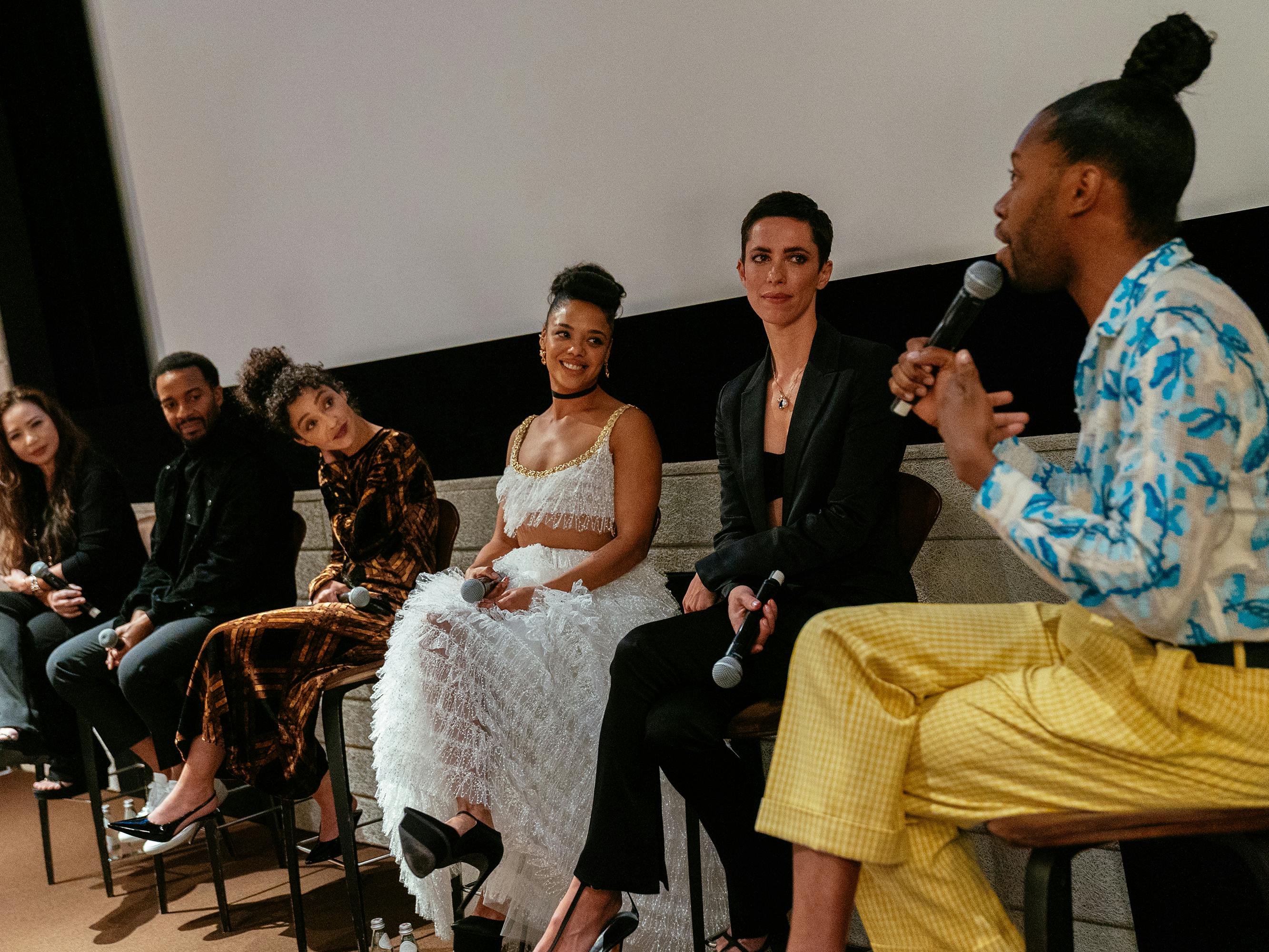
Nina Yang Bongiovi, André Holland, Ruth Negga, Tessa Thompson, Rebecca Hall, and Jeremy O. Harris
Jeremy O. Harris: When you were starting to craft these characters, at first it seemed like a process of exorcism, right? Family exorcism, exploration?
Rebecca Hall: It was a funny process. It was 13 years ago that I read the book, and it had such a profound effect on me. My grandfather was Black and passed as white for his whole life. When I first read the book, it not only gave me context in history and compassion for my grandfather, it also gave me framework to talk about my relationship to my own racial identity and also identity at large — because I do think it transcends the specificity of race and becomes about something that all of us can relate to. I finished the book and immediately wrote the screenplay in 10 days. It was pretty crude, but the big ideas were there. Within 10 pages of reading the novel, I was like, How the hell is this not a film already? And secondly, I was like, Well, it has to be in black and white. It has to be in a 4:3 aspect ratio so everyone’s in a box and constrained.
Why? I need to know.
Hall: For me, this is about categories. This is about putting people in boxes and the limits of that. If we all are busy trying to fit ourselves into containers, then the messiness of our humanity is going to spill outside. So I wanted to literally put [the story] in a box and make specifically Irene’s character feel restrained by the confines of her own social performance above anything else. Who the hell is she really? She doesn’t know. I mean, that’s really what the film’s about. It takes this other person, Clare, who is performing an aspect of herself but is actually passionately free and full of life to make Irene realize that she doesn’t know. At first blush, it feels literal. Okay, this is a black-and-white world — but it’s not. Nothing is black-and-white, not even the film: It’s a thousand shades of gray. I mean, the longer answer to that question is that it allows me as a filmmaker to cast two Black women in these roles, because in a metaphorical, abstracted world, their faces, with lighting and shadow and everything else, can be mutable.
I love every detail here.
Hall: Take, for example, the scene in the hotel room at the beginning of the movie when [Clare and Irene] are in with [Clare’s white husband] John [played by Alexander Skarsgård]. That room is deliberately oppressively white. The walls are white; their costumes are white. There’s huge amounts of light coming in the side of the room. What I’m trying to do is point out the context. This is his context. It is his domain. He has the most power in the room. So he gets to see what he wants to see, and he’s seeing them as white.
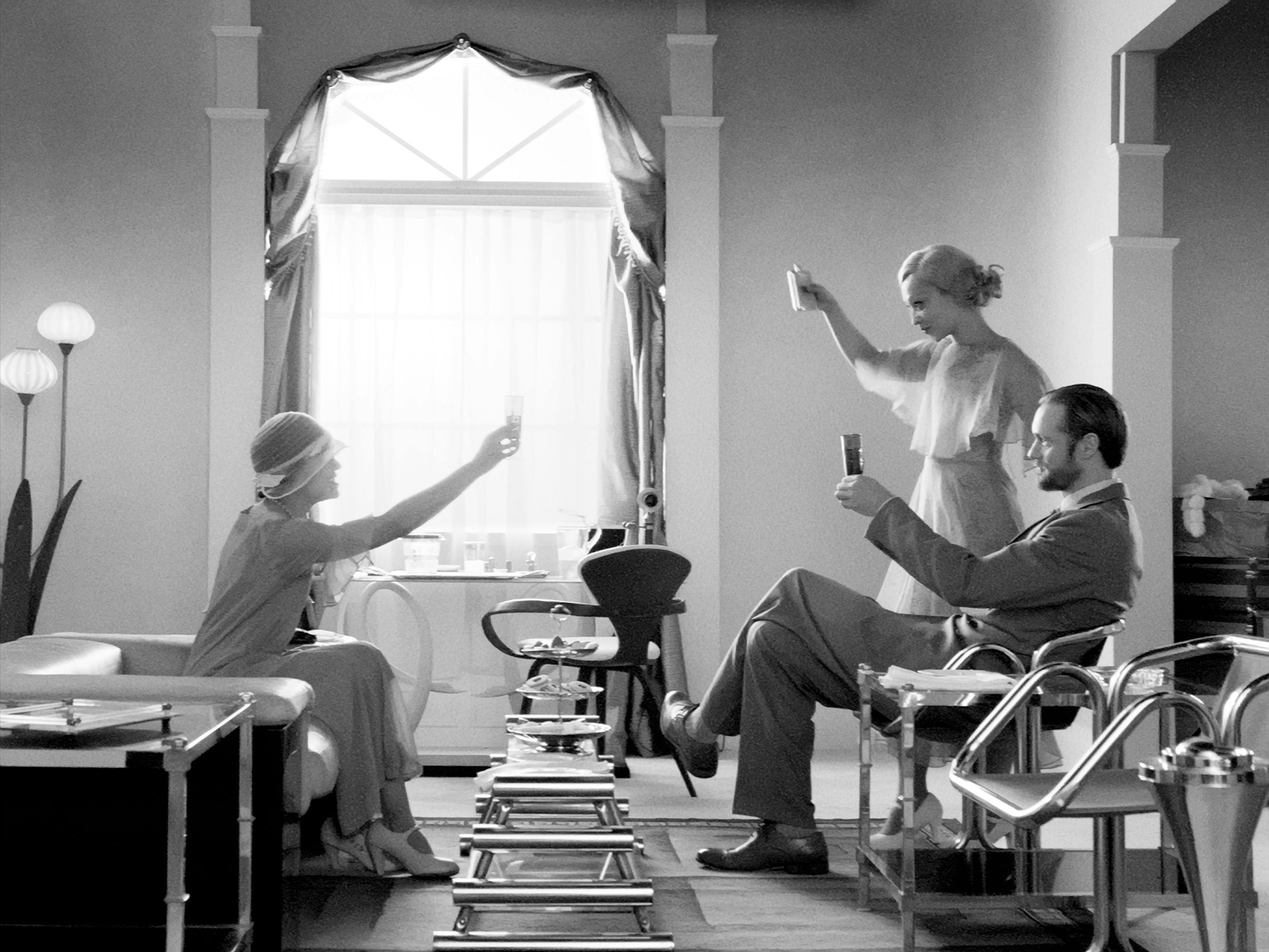
Tessa Thompson, Ruth Negga, and Alexander Skarsgård
For everyone else here, how did you come to this story? Was your first interaction with it the screenplay, or had you met the book in college or elsewhere?
Nina Yang Bongiovi: Many of my peers have talked about reading it in school as part of their curriculum. The first time I actually read it was after I read Rebecca’s screenplay and was quite moved by her adaptation. I knew how culturally significant this book is to Black culture, to the Harlem Renaissance.
André Holland: Same for me. I grew up knowing what the concept of passing is, obviously, but after reading the screenplay, I picked up the novel and was blown away. I connected with the book.
Ruth Negga: I’d read the book, and I fell in love with it. It was pretty hard to find. It wasn’t on any curriculum in any of the schools [I attended], and I don’t know that many people who’ve read it, which is mind-blowingly depressing when you think about the quality of it. It’s the kind of book that you read and you put down every five seconds or underline something every five seconds because something has just so viscerally affected you, moved you. It reads like a thriller because everything is so unexpected. I’d never read anybody as disarming as Clare in my life. You don’t even know if she’s comfortable in her skin or if she’s just enjoying being comfortable in her skin to piss other people off. That fascinated me. I was curious about Irene as well and what happens to these two souls and how they fizzle for one another. Really the most important part of their lives, for good or bad, is when they meet again. That reunion, the chemistry that they create, I’d never seen that in relationships before either. When Rebecca said she was doing it, I was like, I need to be in this by any means necessary.
Tessa Thompson: I hadn’t read the book. I read it in the same way that Rebecca put down the novella and opened her computer. I put down the novella and opened my computer and read her screenplay just after. I was so haunted by the book. I knew about Rebecca, loosely about her family history. I knew she had real skin in the game, but when I read the book, I was like, How do you communicate this into cinematic language? The book is so inside of Irene’s experience. It’s really interior. I found both the characters so fascinating, just bad bitches.
Holland: One thing I found really fascinating is that the character I played, in this moment where so many people are flooding into Harlem from the South or coming back from the war from various places, this man is desperate to get away from this place.
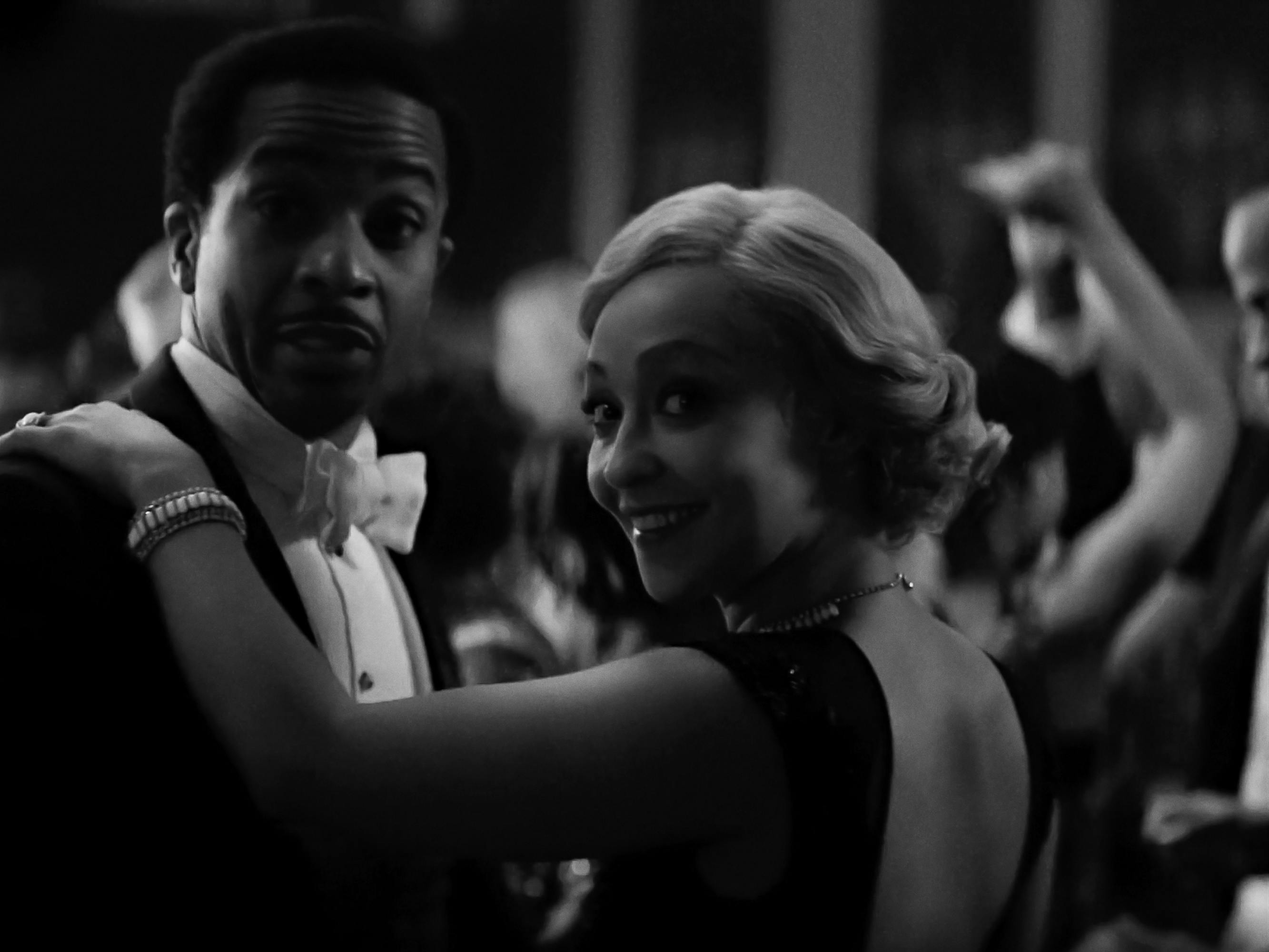
André Holland and Ruth Negga
He wants to go to Brazil. We know what goes on in Brazil.
Thompson: It was a queer haven at the time. I thought a lot about that read of it, just because I thought a lot about the queerness of Nella’s work. I really loved engaging with all the different reads and ideas. On one hand, I think Irene really enjoys that sense of freedom of being this new kind of Negro in some way. The interesting thing is I think she engages with it most with a white gaze; you see her flexing that in when she’s in relationship with Hugh [played by Bill Camp]. She’s steeped in really old ideas on the surface, but internally, she is a mess with longing for newness. I think I’m still engaging with what it means to be this new Negro that I am now.
Rebecca, when you first told me you were working on this, I felt you would write and direct and star as Clare or Irene.
Hall: It never for a second occurred to me to act in it. I thought they were wonderful parts, and I was really excited to see two brilliant actors play them, but it never occurred to me to be in it for a couple of reasons. The first obvious one is that I didn’t want to direct, write, and act in something. The bigger reason is, if this film were being made in 1929, for example, someone like me would probably have been perfect casting. But we have different ideas about how identity is constructed now and to force the immediacy of a Black perspective, it was crucial to have two women whose racial identities were already fixed in the audience’s mind. From there, as a filmmaker, I have to destabilize that idea and point out the slippery reality of all of these things. I was talking about that scene earlier in the hotel room. John has the power to see what he wants to see, but never for a second do I want the audience to see anything other than two Black women, because then you’re thinking, Is no one seeing what I’m seeing? Are they going to get caught? I’m scared. That’s a much more immediate, real feeling than if I were essentially pandering to the white gaze by being like, Oh, it’s fine, they look exceptionally white. Fundamentally, it’s important to redress the balance here.
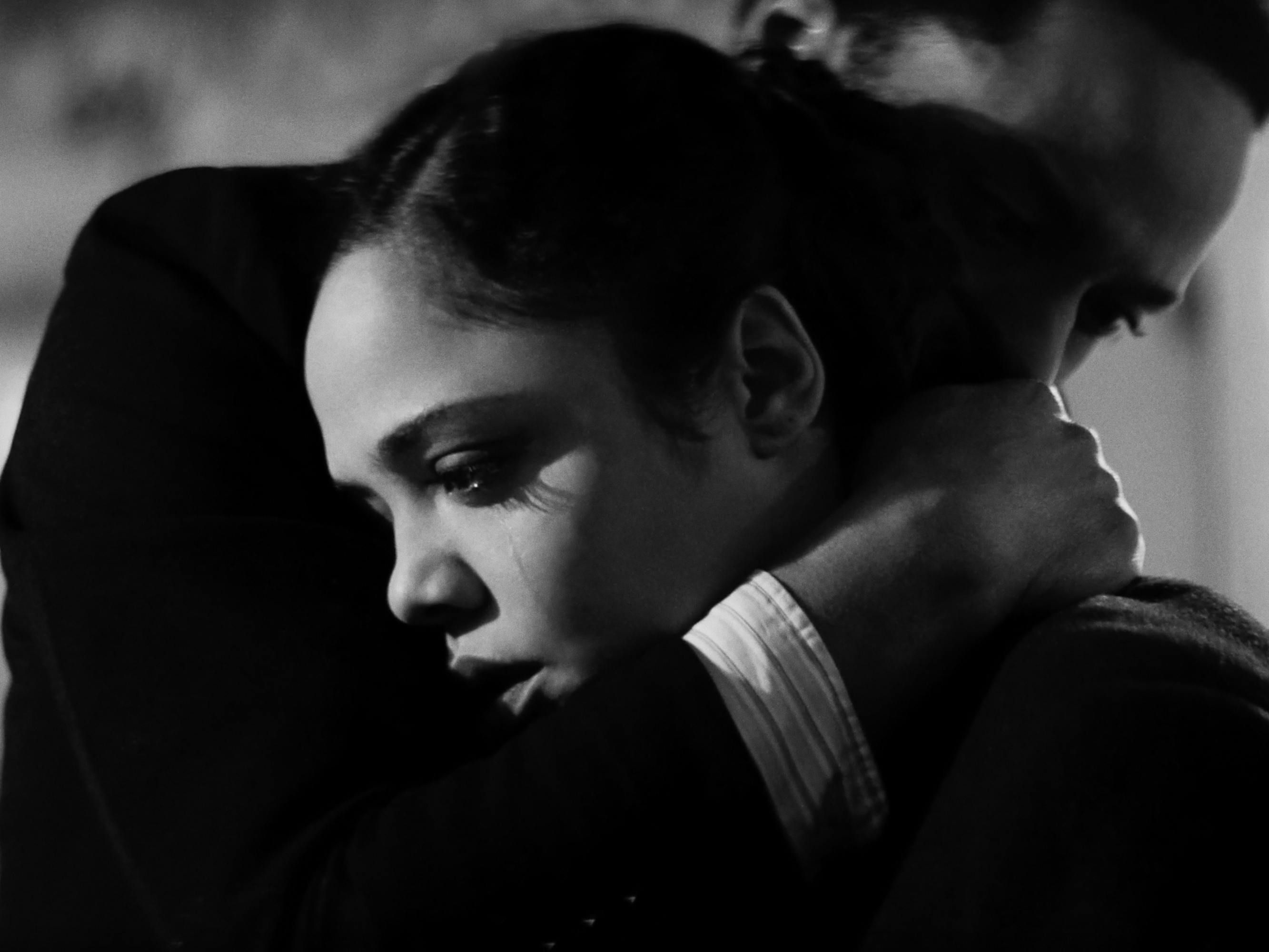
André Holland and Tessa Thompson
In this moment where we’re in conversations around race and who’s making what and how, how did you think about crafting your team for this film?
Yang Bongiovi: When we were raising the financing for this film, I wanted to make sure that 80% of our financiers were people of color. We also made sure that there were Black women investors in the film. In front of the camera, behind the camera, when it came to heads of departments with financiers, we wanted to create a lot of solidarity for people of color overall to support a film like this.
Hall: Nina and Forest [Whitaker] are the company that set themselves out to do the impossible and to do the projects that everyone says no to — which this one was for seven years. With them, they didn’t say, “Don’t do it in black and white,” or, “Can you make it less ambiguous?” Nina and Forest just said, your vision is correct, let’s do it and let’s do it right.
I think about what it means to be a person who’s sort of transcended race in the sense of class — living inside of that weirdness of newfound celebrity, wealth, and significance inside of culture that allow one to live a whiter life — and contending with those aspects of what passing means. Passing is a thrill, and it’s also living on the edge. That’s something that I love about Clare’s character.
Negga: What I love about Nella Larsen’s book is that she refuses to condemn and condone. She takes the tragic Mulatto trope, and she disposes of it entirely. Clare is not likable, but you do feel an affinity towards her because she’s exploring things that most people don’t have the balls to do. I do think she gets an exhilarating thrill out of getting away with something. So many of us are just wearing these coats of normality and doing what we think we should do. Imagine if all the rules were just gone — to me, this is Clare. It’s a thrill to play someone who is willing to break boundaries, to ruffle feathers, and all the while the very real threat of death and danger’s there. Because we do that; we’re human, and we’re fucked up, and you rarely see that onscreen. You rarely see it with women, and you rarely see it with women of color. I hopefully got to embody the brilliance of someone who refuses point blank to be what you need her to be or to maintain this status quo that serves only a few.
